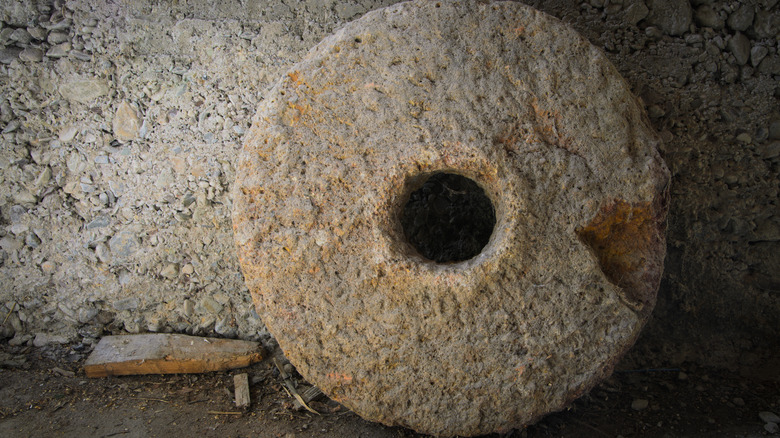How Was The Wheel Really Invented?
It's hard to imagine modern life without the wheel. And you'd have to go back several eons to find a civilization that did not use a wheel in some fashion. Say, roughly 5500 years to the Mesopotamian civilization, according to Ancient Origins. The wheels used thousands of years ago were quite different from the ones we see today, and how they came to be shows how mankind can accomplish just about anything.
The first "wheel" was not used for transportation, however. It was most likely a potter's wheel, according to Ancient Origins. As a spinning round disc, it was used on its side to help potters form clay pots and vases. People also used round discs for irrigation and milling. That's a far cry from the kinds of wheels we know today, and it took quite a bit of ingenuity to get from a potter's wheel to an upright wheel.
Making a wheel for transportation was challenging
While the idea of making a wheel for transportation sounds like an easy one, it was actually quite challenging due to the axle. Without getting too much into the physics of it, a wheel needs to have a hole directly in the center of it in which an axle must spin smoothly. Interesting Engineering explains that other aspects also come into play, such as a technique for carving smooth edges. In addition, man would need to find a way to make the wheels perpendicular to the axle. Moreover, friction was a tough barrier to overcome. The axle needed to be just the right size to minimize friction while still being able to carry weight.
These obstacles were so insurmountable that archeologists think that the invention of the wheel did not evolve. Instead, the right mechanisms were put together all at once and that knowledge spread to other areas, per Interesting Engineering.
While we will likely never know when the first wheel was invented, the oldest wheel discovered dates to B.C. 3500 in the Bronze Age. According to Live Science, this is rather late in the evolution of tools, but the instruments invented in this age were needed to make the components of the wheel and axle function properly.

